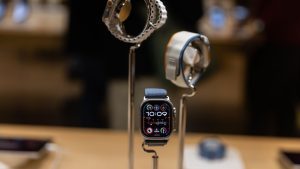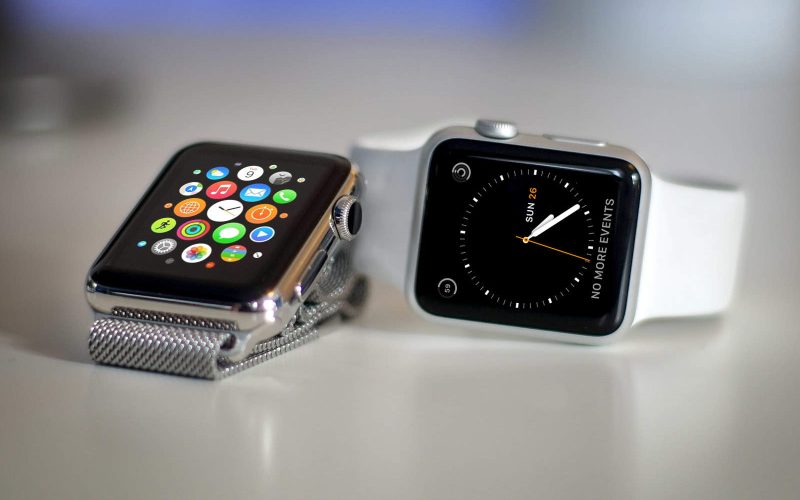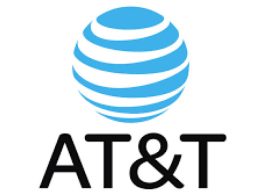Apple’s Watch Woes: How a Patent Dispute Cost Them the US Market
Introduction
Hi, I’m Fred Wilson, a tech journalist and a smartwatch enthusiast. I’ve been following the development of Apple Watch since its inception and I’ve witnessed how it revolutionized the wearable industry with its innovative features and design. However, I’ve also seen how it faced legal challenges and controversies over some of its technologies, especially the blood oxygen sensor that measures the oxygen level in the blood.
In this article, I will give you a comprehensive and analytical overview of the patent dispute between Apple and Masimo, a medical device company that claims Apple stole its pulse oximetry technology and incorporated it into the Apple Watch. I will also explain how this dispute led to a ban on Apple Watch sales in the US, the largest and most lucrative market for smartwatches, and what it means for the future of Apple Watch and the wearable industry in general.
What is Pulse Oximetry and Why is it Important?
Pulse oximetry is a non-invasive method of measuring the oxygen saturation of the blood, which indicates how well the body is delivering oxygen to the tissues and organs. It is a vital sign that can help diagnose and monitor various health conditions, such as asthma, chronic obstructive pulmonary disease (COPD), sleep apnea, heart failure, and COVID-19.
Pulse oximetry is typically performed using a device called a pulse oximeter, which consists of a probe that attaches to the finger, toe, or earlobe and emits light of different wavelengths. The device measures how much light is absorbed by the blood and calculates the oxygen saturation level based on the ratio of red to infrared light.
Pulse oximetry has been widely used in clinical settings for decades, but in recent years, it has also become available in consumer devices, such as smartwatches, fitness trackers, and smartphones. These devices aim to provide users with more insight into their health and wellness, as well as alert them to potential issues that may require medical attention.
How Apple Watch Introduced Blood Oxygen Feature and How it Works
Apple Watch is one of the most popular and advanced smartwatches in the market, with over 100 million units sold worldwide since its launch in 2015. It offers a range of features that monitor the user’s activity, heart rate, sleep, and more. However, one of the most anticipated and controversial features that Apple Watch introduced was the blood oxygen feature, which debuted in the Series 6 and Ultra 2 models in 2020.
The blood oxygen feature on Apple Watch uses a similar principle as pulse oximetry, but with some differences. Instead of using a probe, the Apple Watch uses four clusters of green, red, and infrared LEDs on the back of the watch, along with four photodiodes that detect the amount of light reflected by the blood. The Apple Watch then uses an algorithm to estimate the blood oxygen level based on the color of the blood.
The blood oxygen feature on Apple Watch is intended to provide users with general wellness information and is not designed to diagnose or treat any medical condition. Apple also warns that the feature may not work for everyone, as factors such as skin perfusion, skin temperature, motion, and tattoos may affect the accuracy of the readings. Apple recommends that users should consult a doctor before using the feature if they have any health concerns or questions.

How Masimo Accused Apple of Stealing its Technology and Sued for Patent Infringement
Masimo is a California-based medical device company that specializes in pulse oximetry and other non-invasive monitoring technologies. It was founded in 1989 by Joe Kiani, an Iranian-American engineer and entrepreneur, who invented a breakthrough technology called Signal Extraction Technology (SET), which improves the accuracy and reliability of pulse oximetry by filtering out noise and interference from factors such as low blood flow, patient movement, and ambient light.
Masimo claims that it is the leader in pulse oximetry, with over 100 million patients monitored by its devices every year. It also claims that it holds over 300 patents related to pulse oximetry and other technologies.
However, Masimo alleges that Apple infringed on its patents and trade secrets by hiring away its key employees, stealing its pulse oximetry technology, and incorporating it into the Apple Watch. Masimo filed a lawsuit against Apple in January 2020, seeking damages and an injunction to stop Apple from selling its watches with the blood oxygen feature.
Masimo claims that Apple approached it in 2013, expressing interest in a partnership and requesting information about its technology and products. Masimo says that it shared confidential information with Apple, trusting that it would respect its intellectual property rights. However, Masimo says that Apple soon began to poach its employees, including Michael O’Reilly, who was Masimo’s chief medical officer and a co-inventor of several of its patents. Masimo says that O’Reilly joined Apple in 2014 and became the vice president of health technology, overseeing the development of the Apple Watch.
Masimo also claims that Apple hired other former Masimo employees, such as Marcelo Lamego, who was Masimo’s chief technology officer and another co-inventor of its patents. Masimo says that Lamego joined Apple in 2017 and brought with him confidential information and trade secrets from Masimo. Masimo says that Lamego was involved in the design and implementation of the blood oxygen feature on the Apple Watch.
Masimo accuses Apple of copying its pulse oximetry technology and infringing on 10 of its patents, covering aspects such as the use of red and infrared LEDs, the placement of the LEDs and photodiodes, the calculation of the blood oxygen level, and the display of the results. Masimo says that Apple’s blood oxygen feature is substantially similar to its own technology and products, such as the iSpO2, a pulse oximeter that connects to an iPhone or iPad via a cable.
Masimo also accuses Apple of engaging in unfair competition and false advertising, by claiming that the Apple Watch is a health and wellness device that can provide accurate and reliable blood oxygen measurements, while knowing that it is not FDA-approved and may not work for everyone. Masimo says that Apple’s actions have caused it irreparable harm and damage, as it has lost customers, revenue, and market share to Apple.
How the US International Trade Commission Banned Apple Watch Sales in the US and How Apple Reacted
The patent dispute between Apple and Masimo escalated in October 2021, when the US International Trade Commission (ITC), an independent federal agency that investigates and adjudicates trade-related disputes, issued a final determination that Apple violated Masimo’s patent rights and ordered an import ban on Apple Watches that contain the blood oxygen feature. The ITC found that Apple infringed on two of Masimo’s patents, covering the use of red and infrared LEDs and the calculation of the blood oxygen level.
The ITC’s order, which was set to take effect on December 26, 2021, would bar Apple from importing, selling, or distributing its Series 6 and Ultra 2 watches in the US, unless it obtained a license from Masimo or removed the blood oxygen feature from its devices. The order would not affect other models of the Apple Watch that do not have the blood oxygen feature, such as the SE or the Series 5.
The ITC’s order was subject to a 60-day review by the president, who had the power to veto the decision on public policy grounds. However, the presidential intervention was rare and unlikely, as the last time it happened was in 2013, when Barack Obama overturned an ITC ban on some older models of the iPhone and iPad over a patent dispute with Samsung.
Apple strongly disagreed with the ITC’s order and said that it would pursue a range of legal and technical options to ensure that the Apple Watch would be available to customers. Apple said that it believed the ITC’s finding was erroneous, should be reversed, and that it intended to appeal the decision to the federal circuit. Apple also said that it would seek a stay of the order pending the appeal, as well as request a presidential veto.
Apple also said that it would pre-emptively take steps to comply with the order, should it stand. Apple said that it would pause sales of the Series 6 and Ultra 2 watches from its website starting from December 21, 2021, and from its retail locations after December 24, 2021. Apple said that the Series 6 and Ultra 2 watches would remain available for purchase outside of the US, including during the lunar new year season in Asia.
Apple also said that it would continue to support and update the existing Series 6 and Ultra 2 watches that were already sold or in transit in the US, and that it would not disable the blood oxygen feature on those devices. Apple said that it valued its customers and their health and wellness, and that it would work hard to restore the availability of the Apple Watch in the US as soon as possible.
What are the Consequences and Future Prospects of the Patent Dispute for Apple, Masimo, and the Smartwatch Industry?
The patent dispute between Apple and Masimo has significant consequences and future prospects for both parties and the smartwatch industry as a whole. Here are some of the possible outcomes and implications of the case:
- For Apple, the patent dispute could result in a major setback for its wearable business, as it could lose access to the US market, which accounts for about 40% of its global smartwatch sales. Apple could also face reputational damage, as it could be seen as a copycat that infringes on the innovation and intellectual property of others. Apple could also face legal challenges from other companies or regulators that may question its use of health-related technologies without proper approval or validation. However, Apple could also benefit from the patent dispute, as it could generate more publicity and demand for its products, as well as motivate it to develop more original and distinctive features for its smartwatches. Apple could also leverage its financial and technical resources to appeal the ITC’s order, negotiate a settlement with Masimo, or find alternative solutions to bypass the ban.
- For Masimo, the patent dispute could result in a major victory for its pulse oximetry business, as it could protect its technology and products from being copied or commoditized by Apple. Masimo could also benefit from the patent dispute, as it could raise its profile and credibility in the medical device industry, as well as attract more customers and partners that value its innovation and quality. Masimo could also use the patent dispute as an opportunity to expand its presence and offerings in the consumer market, by launching its own smartwatch or collaborating with other wearable makers. However, Masimo could also face challenges from the patent dispute, as it could provoke a backlash from Apple’s loyal and influential fan base, as well as invite more scrutiny and competition from other players in the pulse oximetry and wearable fields.
- For the smartwatch industry, the patent dispute could result in a major shift in the competitive landscape, as it could disrupt the dominance and influence of Apple, which currently holds about 50% of the global smartwatch market share. The patent dispute could also create more opportunities and challenges for other smartwatch makers, such as Samsung, Huawei, Fitbit, Garmin, and Fossil, who may seek to fill the gap left by Apple in the US market, or differentiate themselves from Apple in other markets. The patent dispute could also stimulate more innovation and collaboration in the smartwatch industry, as it could encourage more research and development of new and improved features and technologies, as well as more partnerships and alliances among various stakeholders, such as device manufacturers, software developers, health providers, and regulators.
Conclusion
In conclusion, the patent dispute between Apple and Masimo over the blood oxygen feature on the Apple Watch is a complex and consequential case that has far-reaching implications for both parties and the smartwatch industry. The case highlights the importance and challenges of protecting and respecting intellectual property rights, as well as balancing innovation and regulation in the health and wellness sector. The case also demonstrates the potential and pitfalls of integrating pulse oximetry and other health-related technologies into consumer devices, such as smartwatches, that aim to provide users with more insight and control over their health and wellness.












